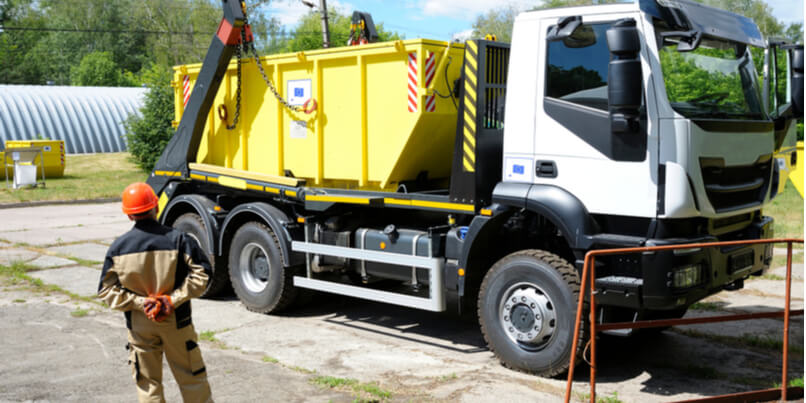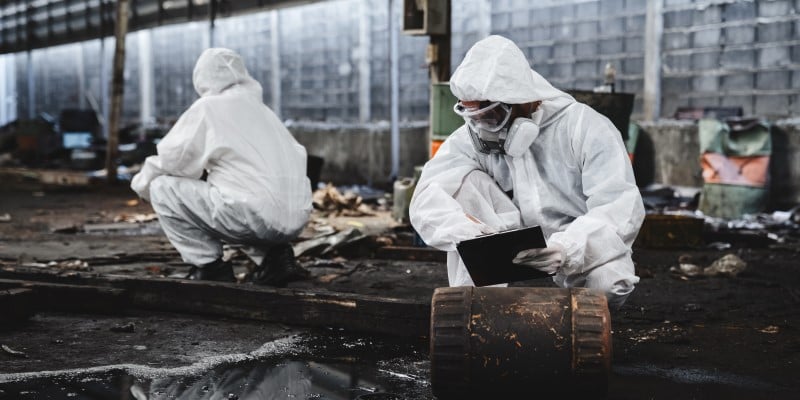 Radiation safety training is a core requirement for all personnel who are responsible for the handling, transportation, transfer or receipt of packages that contain radioactive materials.
Radiation safety training is a core requirement for all personnel who are responsible for the handling, transportation, transfer or receipt of packages that contain radioactive materials.
In the US, the federal government's Department of Transportation (DOT) is the lead agency responsible for the planning and support of land, air and sea-based movement of hazardous materials (HazMat) shipments.
Additionally, the department also sets out the training requirements for all employees who are responsible for working in a HazMat capacity.
In accordance with DOT regulations, all new HazMat employees must receive radiological safety training within 90 days of assignment to their role.
They are also required to work under supervision until they are fully trained and they must repeat their HazMat training at least once every three years.
DOT HazMat training requirements
Training in the transport of hazardous materials over ground or by highway is mandated by the Hazardous Materials Regulations (HMR) which are located in Title 49 of the Code of Federal Regulations (49 CFR).
DOT HazMat training covers the requirements for both the transportation and the receipt of hazardous quantities of radioactive materials, whether by general freight or air.
The course includes a definition of radioactive materials; marking, labelling, placards and packaging; the completion of shipping manifests; security awareness, and emergency response.
There is an assumption that all students who undertake DOT HazMat training will already have obtained a basic knowledge of the principles of radiation safety, including the nature and characteristics of ionising radiation, units of radiation and radioactivity, the biological effects of ionising radiation, the risks of occupational exposure, radiation dose and dose limits.
For those responsible for the transport of hazardous substances by air, there are additional IATA Dangerous Goods Regulations (DGR) requirements that are directly applicable to cargo and passenger aircraft.
Goods that are transported by sea vessel are also required to comply with the International Maritime Dangerous Goods (IMDG) Code.
UK radiation safety standards
In the UK the regulations governing the transport of radioactive material are based on standards developed by the International Atomic Energy Agency (IAEA).
It is a legal requirement that all personnel whose duties include the carriage of dangerous goods by road, sea, rail or air are provided with appropriate radiation safety training.
Any material where the radionuclide activity concentration and the total activity exceeds certain predefined values is defined as being a Class 7 radioactive material.
Commonly transported radioactive materials can include radioactive ores, density gauges, enriched uranium, uranium hexafluoride, depleted uranium, radioactive isotopes and surface contaminated objects.
Radiation safety in the workplace
The Ionising Radiation Regulations 2017 (IRR17) are enforced by the UK Health and Safety Executive (HSE) and focus on the protection of exposure to ionising radiation in the workplace.
A significant requirement of the IRR17 regulations is that employees' radiation exposure is restricted as Low As Reasonably Achievable (ALARA).
It is vital that radiation workers understand the risks to health that can be created due to ionising radiation, that they are familiar with radiation protection precautions and procedures and that they are aware of the the importance of complying with the medical, technical and administrative requirements of the regulations.
Provision of safe and effective radiation safety training
Providing practical, realistic and repeatable radiation training has long been a challenge for those working in a HazMat or radiological safety capacity.
While there are undoubted benefits in adopting a hands-on approach to radiological training, there are also inherent challenges in being able to successfully replicate the nature, characteristics and complexities of radiation incidents.
In recent years we've seen a growing recognition of the value of high-quality simulator training systems in helping to consolidate radiation safety and preparedness.
The use of simulator detectors offers advantages both for the trainee and the trainer.
From the instructor's perspective, there is the opportunity to create bespoke, realistic and practical training scenarios - as well as yielding significant benefits in terms of reductions in cost, time and administrative effort.
For the student, having the opportunity to experience hands-on training that includes the use of life-like equipment offers an enhanced degree of realism that classroom training will always struggle to achieve.
More recently too we have seen significant advancements in simulator training capability, perhaps most notably in the research and development of the Radiation Field Training Simulator (RaFTS) training system.
In combing the near unlimited possibilities of virtual technology with the hands-on practicality of real-world capability, RaFTS offers an unprecedented opportunity to heighten the authenticity and the learning outcomes of radiation safety training.







